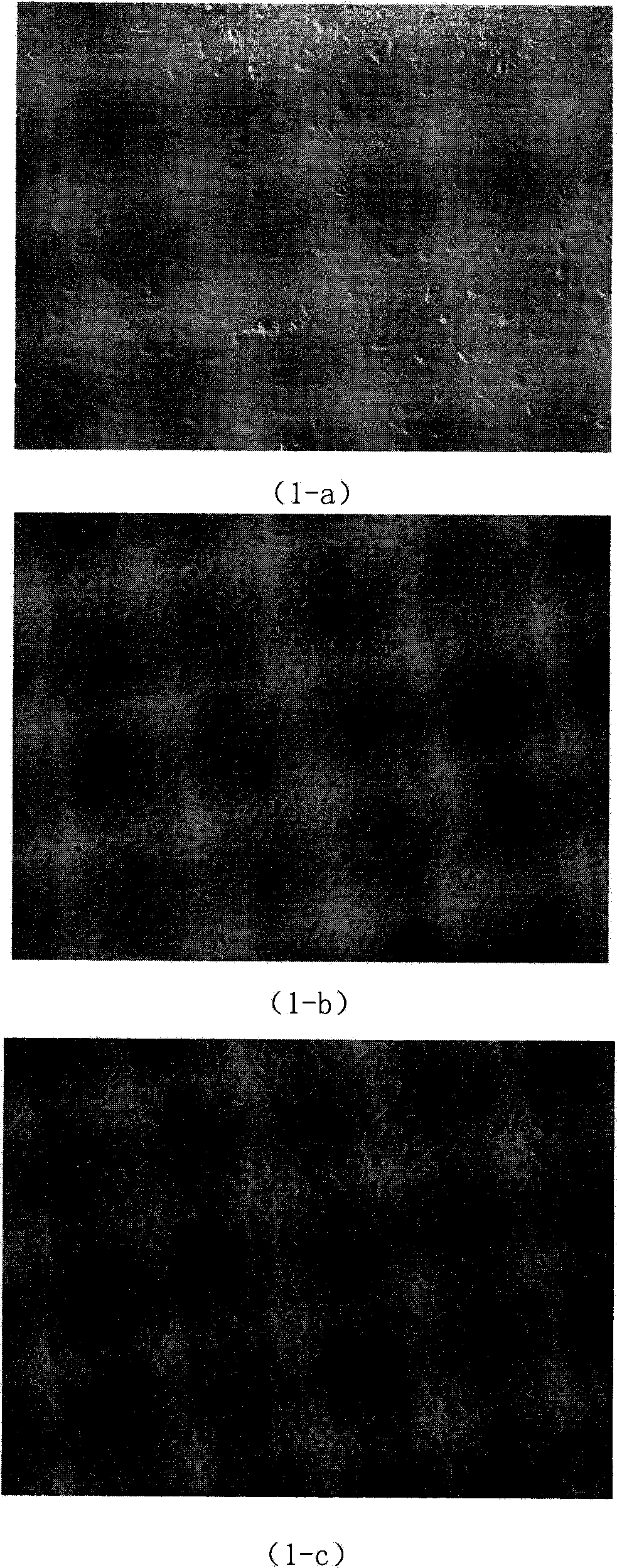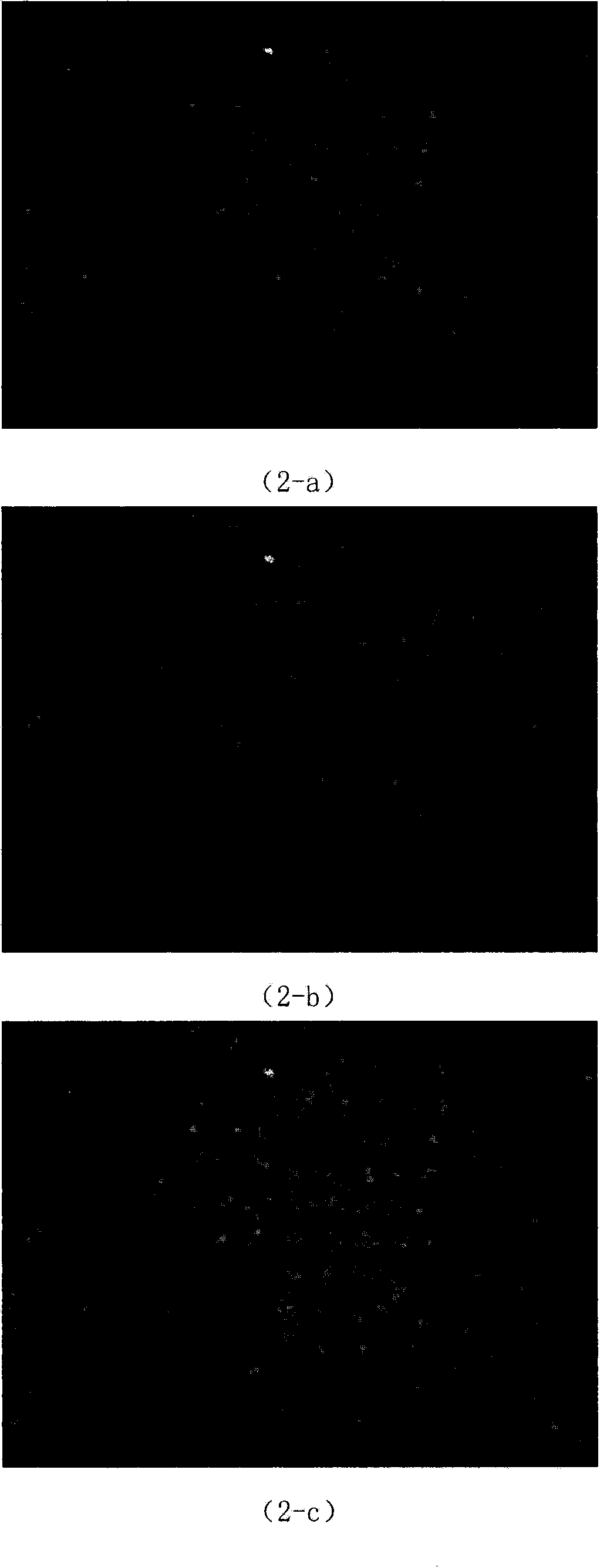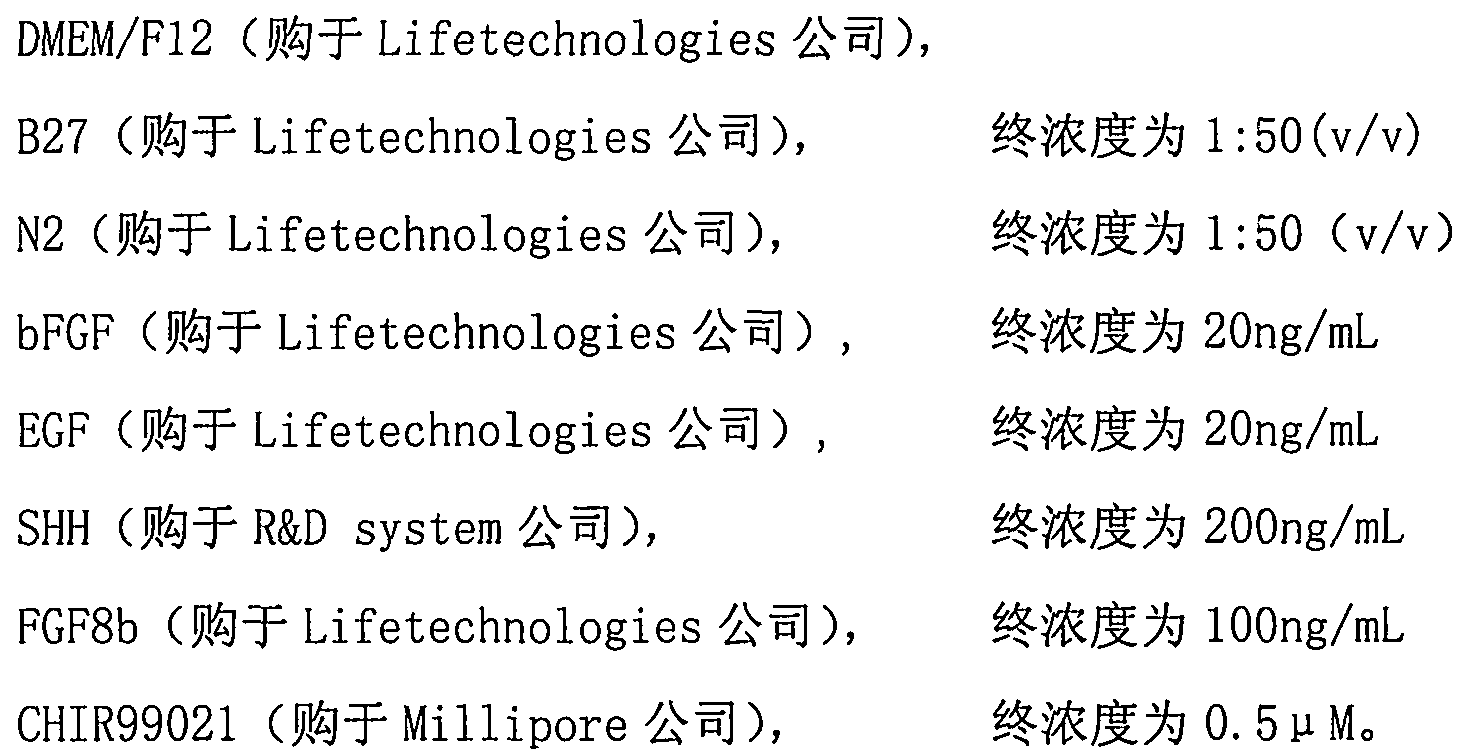Method for differentiating human neural stem cells into dopaminergic neuron by in-vitro directional induction
A dopaminergic and differentiation-inducing technology, applied in the field of biomedicine, can solve the problems of low induction efficiency of dopaminergic neurons, influence of serum on clinical use, etc., and achieve the effects of easy acquisition, reduced probability, and improved safety.
- Summary
- Abstract
- Description
- Claims
- Application Information
AI Technical Summary
Problems solved by technology
Method used
Image
Examples
Embodiment 1
[0020] Embodiment 1: Adhesive culture of human neural stem cells:
[0021] Dilute laminin (Laminin, LN, purchased from Lifetechnologies) with DPBS (Dulbecco's Phosphate Buffered Saline) to 10 μg / mL; take a six-well plate for cell culture, coat it with Laminin solution, and store at 37°C Act for 2 hours, then wash the six-well plate once with DPBS, and store it at room temperature for later use; take human neural stem cells freshly passaged to passage P5-P8, count the cells, and use serum-free medium according to 5×10 4 / mL to make a cell suspension, evenly inoculated into the culture plate prepared above, at 35°C, 5% CO 2 Incubate in an incubator for 24 hours.
[0022] The above-mentioned serum-free medium contains DMEM / F12, B27 (1:50), N2 (1:50), bFGF (basic Fibroblast Growth Factor, basic fibroblast growth factor, 20ng / mL, purchased from Lifetechnologies Company) and EGF ((Epidermal GrowthFactor, epidermal growth factor, 20ng / mL, purchased from Lifetechnologies company).Ab...
Embodiment 2
[0023] Example 2: Induction of dopaminergic neuronal precursor cells:
[0024] Replace with dopaminergic neuron precursor cell induction medium, and remove unattached cells and dead cells; 35°C, 5% CO 2 The culture is statically cultured in the incubator for 7 days, and the medium is changed every 3 days; when the cells grow to 60-70%, the directional induction of dopaminergic neurons can be carried out.
[0025] The above-mentioned dopaminergic neuron precursor cell induction liquid formula is as follows:
[0026]
Embodiment 3
[0027] Example 3: Cryopreservation and recovery of dopaminergic neuron precursor cells:
[0028] Cell cryopreservation step: Wash the dopaminergic neuron precursor cells in the culture plate once with DPBS without Ca and Mg, then add 0.05% trypsin-EDTA and place in a 37°C incubator Digest in medium for 2 minutes, add trypsin inhibitor (trypsin inhibitor) to stop digestion after digestion, then gently blow and blow to make cell suspension into 50ml centrifuge tube, centrifuge at 400g for 5min, add 20ml DMEM / F12 to wash once, Centrifuge at 400g for 5min, then resuspend with freezing solution to a final concentration of 1×10 6 / ml. Use 2ml cryopreservation tubes for aliquots, 1ml per tube, place in a programmed freezer box, store in a -80°C refrigerator overnight, take it out and store it in a liquid nitrogen tank the next day.
[0029] Cell recovery steps: Take 5 tubes of cells frozen in liquid nitrogen, put them into a thermos bottle filled with liquid nitrogen and transfer t...
PUM
 Login to View More
Login to View More Abstract
Description
Claims
Application Information
 Login to View More
Login to View More - R&D
- Intellectual Property
- Life Sciences
- Materials
- Tech Scout
- Unparalleled Data Quality
- Higher Quality Content
- 60% Fewer Hallucinations
Browse by: Latest US Patents, China's latest patents, Technical Efficacy Thesaurus, Application Domain, Technology Topic, Popular Technical Reports.
© 2025 PatSnap. All rights reserved.Legal|Privacy policy|Modern Slavery Act Transparency Statement|Sitemap|About US| Contact US: help@patsnap.com



